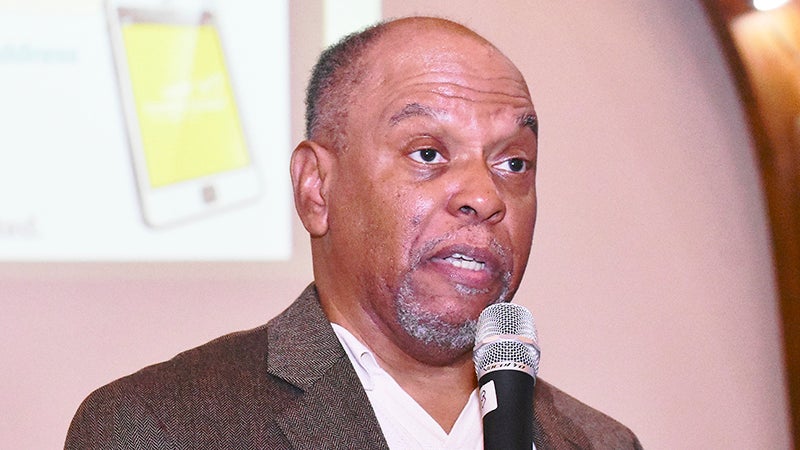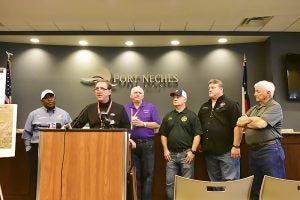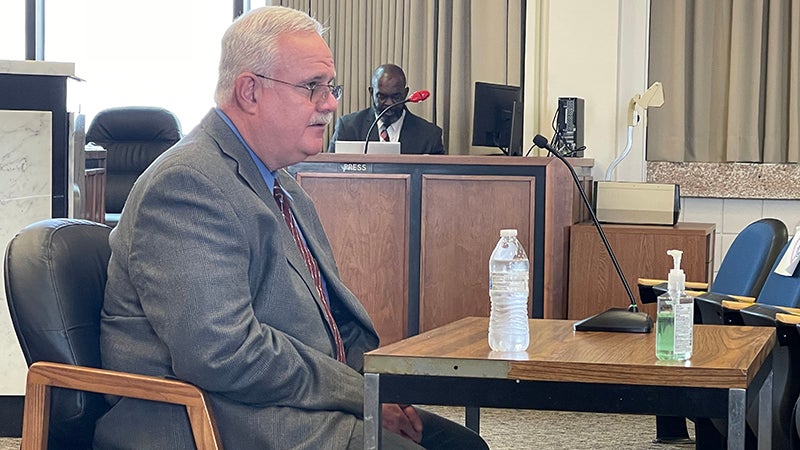Does Port Arthur need its own department of environmental compliance?
Published 12:15 am Saturday, February 15, 2020

- John Beard, chairman of Port Arthur Community Action Network, makes comments during a town hall meeting Saturday at Empowerment Church in Port Arthur. (I.C. Murrell/The News) 12-7-19
John Beard says he’s not against oil refineries and factories doing business locally. But the former Port Arthur city councilman and community advocate simply wants such companies to do their part to protect citizens from the harm that can be caused by chemicals and materials they handle every day.
A longtime resident of Port Arthur’s West Side, the former petrochemical industrial worker has long advocated for those whose health problems have resulted from exceedances in chemical release and other industrial incidents such as the 2017 German Pellets Texas fire at the Port of Port Arthur and the 2019 TPC Group Port Neches Operations explosions.
“My knowledge as a 38-year employee in a plant is that these things just don’t happen in isolation,” Beard said. “Something just blew up? No. There is a series of events that lead to it that say, ‘You better pay attention. This is a problem.’”
Beard founded and chairs the Port Arthur Community Action Network, which focuses on issues facing community development and the local environment. He also serves on the city-commissioned charter advisory, or “charter change,” committee, which suggested to the present city council a need for Port Arthur to have its own department of environmental compliance, similar to an office within Houston’s government.
Port Arthur officials determined during Thursday’s special meeting that such an office could be created by an ordinance but not through a charter change. Jefferson County already has an Office of Emergency Management, which Beard and county Judge Jeff Branick say are more reactive to industrial incidents than proactive.
“Emergency Management is more reactionary, but under the Texas water codes and other local government codes, as I recently discussed with Houston and Harris County, they are empowered to be able to go in and intervene before these incidents happen,” Beard said. “If we have [such an office], they do monitoring. They look at compliance.”
The first of the two TPC explosions was the result of a vapor club that ignited, Manny Ehrlich of the U.S. Chemical Safety and Hazard Investigation Board said during a Dec. 5 news conference. The cause of the second explosion is still being investigated.
“We have a full Environmental Health and Safety program in place with dedicated resources to address safety and environmental issues,” TPC spokeswoman Sara Cronin said. “Our response efforts from the November 27 event are ongoing. It’s too early in the process to determine cause.”
A link through the Texas Tribune revealed TPC posted final reports on its fenceline monitoring online from August 2018 to October 2019 and notated sources of its leaks of butadiene and actions to reduce the emissions. Cronin said TPC has operated a new fenceline monitoring system since February 2018, and from that month to March 2019, TPC investigated all monitored occurrences of butadiene concentrations that met frequency and 25-part per billion volume requirements as required by the Supplemental Environmental Project.
“Of these occurrences, the Company identified one instance — on August 11, 2018 — where a Port Neches facility source contributed to a 1,3-butadiene concentration of 25 ppb volume or greater at the fence line,” Cronin said. “However, during the same timeframe referenced, we identified a gap in the administrative process to determine if a fence line reading met the criteria for posting to the website. Once the gap was identified, the issue was resolved by strengthening the administrative process to meet the requirements of the order with regard to posting the results.”
Beard doesn’t believe TPC did enough to prevent the explosions.
“The readings they got along the plant fenceline are stating, ‘Hey, y’all got a leak,’” Beard said. “Nobody paid enough attention. Nobody did enough work. They didn’t create a program to say, ‘Look, if we’re leaking benzene, we need to find all our benzene components and equipment that handles it that we do an inspection and maintenance program on each and every part of it. They would see that. They would intervene more rapidly than TCEQ or the others would.”
Butadiene and benzene are known carcinogens, a substance that can cause cancer.
Cronin said TPC’s fenceline monitors were fully operational months before the explosions.

From left, Port Arthur Mayor Thurman Bartie, Jefferson County Judge Jeff Branick, Port Neches Mayor Glenn Johnson, Groves Mayor Brad Bailey, TPC director health, safety and security Troy Monk and Nederland Mayor Don Albanese deliver updates during a TPCS aftermath news conference at Port Neches City Hall. (I.C. Murrell/The News) 11-30-19
Skeptical
Branick, a Port Arthur native, is skeptical that a city-commissioned environmental compliance office would prevent incidents like the TPC explosions, noting a series of problems in the Houston area in recent years. Two people were killed in an explosion that occurred at Watson Grinding and Manufacturing warehouse in Houston on Jan. 24.
“My point with Mr. Beard is to have an effective office, No. 1, you have to have a highly trained individual,” Branick said. “It would be a highly expensive office to run, and it would duplicate what is done by OSHA and other agencies. I don’t see the return on the investment or as a tool to preventing incidents.”
Branick added the Jefferson County Office of Emergency Management conducts trainings for emergency management and personnel but doesn’t go out to refineries and inspect pipes and vessels or the like.
Beard’s desire for local enforcement remains in the days after the Environmental Integrity Project reported six of the 10 U.S. oil refineries releasing excessive amounts of benzene were in Texas. Total Port Arthur released a net concentration of 22.3 micrograms per cubic meter (ug/m3) of benzene, 148% greater than the Environmental Protection Agency action level of 9 ug/m3. Total’s measurement was third-highest in the country, according to the report, and highest among Texas refineries.

Texas State Rep. Dade Phelan, R-Beaumont, in gold jacket, listens to a news conference in Beaumont. (I.C. Murrell/The News)
District 21 State Representative Dade Phelan, R-Beaumont, expressed his concern over high benzene levels and recent industrial incidents in a statement this week.
“From Houston to Baton Rouge — major chemical and refining incidents are occurring more frequently,” Phelan said.
“In addition, elevated benzene levels have been reported in Southeast Texas and Houston over the last year. This is unacceptable. While accidents do occur, it is critical that the industry be accountable and held to the highest standard of compliance. We must identify how these events could have been prevented and take legislative action to ensure all plants and refineries are following the necessary procedures to ensure the safety of their workers and the citizens that live in the surrounding communities.”
In the meantime, Beard encourages residents negatively impacted by industry to call first responders if they smell, see or hear anything unusual and to state what they smell and where they live.
“If you have the number for the main gate at one of these plants, they’ll either call them or you can call them and they’ll send out what’s called a community environmental coordinator,” Beard said. “… We need boots on the ground here to intervene before an incident so that emergency response does not have to be the only response we have.”
Editor’s note: This story has been updated from the printed version.






